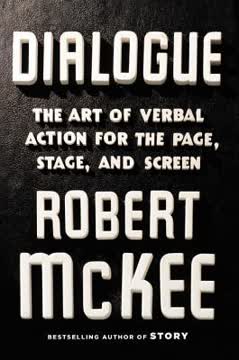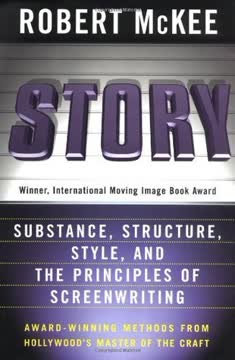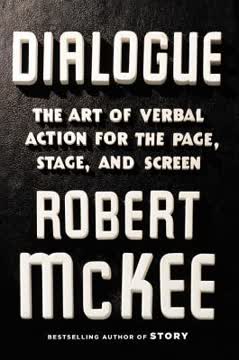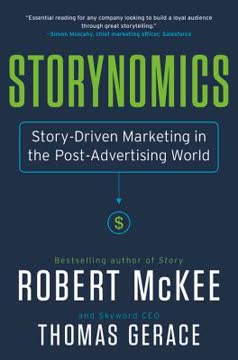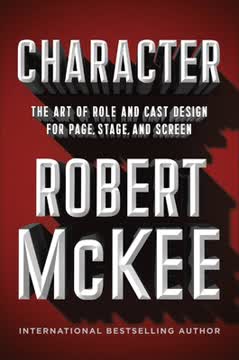Key Takeaways
1. Dialogue Encompasses All Character Speech, Not Just Conversation
Dialogue: Any words said by any character to anyone.
Expanded definition. Traditional views limit dialogue to talk between characters. This book broadens the scope to include all character speech, whether spoken aloud to others, thought internally to oneself, or addressed directly to the reader or audience.
Three modes. Character talk operates on three distinct tracks: duologue/trialogue/multilogue (to others), inner dialogue (to oneself), and narratized dialogue (to reader/audience). All require the writer to create a unique, character-specific voice.
Verbal action. Regardless of the mode, all character speech is a performative action. Words are deeds, driven by a character's needs and desires, propelling the scene and the character's journey.
2. Dialogue Serves Three Core Functions: Exposition, Characterization, and Action
Dialogue, dramatized and narratized, performs three essential functions: exposition, characterization, action.
Exposition delivery. Dialogue subtly conveys necessary background information about setting, history, and characters. This must be paced and timed carefully, often smuggled in unnoticed through narrative drive or used as "ammunition" in conflict.
Character revelation. Dialogue is crucial for creating and expressing a character's unique personality (characterization) and revealing their deeper moral and psychological being (true character) through their choices and actions under pressure.
Driving the plot. Dialogue is a primary vehicle for character action—mental, physical, and verbal. What characters say and how they say it drives the plot forward, creating action/reaction beats that progress scenes.
3. Effective Dialogue Reveals Subtext: The Unsaid and Unsayable
Dialogue unites these realms because the spoken word resonates through all three spheres.
Layers of meaning. Dialogue operates on multiple levels: the "said" (explicit words), the "unsaid" (conscious thoughts/feelings withheld), and the "unsayable" (subconscious drives beyond awareness).
Transparency. Skillful dialogue creates transparency, allowing readers/audiences to intuit the unsaid and sense the unsayable beneath the surface words. This makes them feel like mind readers, gaining deep insight into characters.
Action vs. activity. Dialogue is not just the activity of talking; it's the action taken through talk. The subtextual action (e.g., comforting, bribing, ridiculing) is the true meaning behind the textual activity (the words spoken).
4. Dialogue Form and Quantity Vary Greatly Across Media and Genres
All dialogue, dramatized and narratized, performs in the grand symphony of story, but from stage to screen to page, its instruments and arrangements vary considerably.
Medium dictates style. Theatre favors auditory dialogue (poetic, heightened language), film favors visual storytelling (concise, naturalistic dialogue), and television balances both. Prose offers the widest range, from naturalistic scenes to extensive inner monologues and narration.
Genre influences form. Action genres use less dialogue; personal/private conflict genres use more. Nonrealistic genres (fantasy, farce) allow for highly stylized, sometimes on-the-nose dialogue, while realism demands subtext.
Credibility is key. Regardless of medium or genre, dialogue must sound plausible and vernacular within the story's specific world, not necessarily imitate real-life banality.
5. Craft Expressive Dialogue Through Specificity, Economy, and Imagery
Vigorous writing is concise.
Omit needless words. Economy is paramount; every word must count. Avoid clutter, generic terms, passive voice, and overly long speeches unless intentionally characterizing pretentiousness or other specific traits.
Specificity and imagery. Use concrete, specific nouns and verbs, and evocative modifiers and tropes (metaphors, similes) to make dialogue vivid and character-specific. Sensory language resonates deeply.
Avoid clichés. Shun tired phrases and predictable exchanges. Strive for originality by exploring numerous options and choosing the most unexpected yet truthful expression for the character and moment.
6. Avoid On-the-Nose Writing; Dialogue Should Imply, Not State
Dialogue should imply, not explain, its subtext.
Show, don't tell. On-the-nose writing explicitly states a character's full thoughts and feelings, eliminating subtext and making dialogue flat and unactable. Real people rarely say exactly what they mean or feel.
The trialogue. A powerful technique to avoid on-the-nose dialogue is the "trialogue," where two characters in conflict funnel their struggle through a "third thing" (an object, idea, memory, or other character) rather than confronting the core issue directly.
Conflict and implication. The greater the conflict and pressure, the more characters tend to imply rather than state their true intentions and feelings, forcing the reader/audience to read between the lines.
7. Dialogue Problems Are Fundamentally Story and Scene Design Problems
Dialogue problems are story problems.
Subtext is foundational. Weak dialogue often stems from flaws in the underlying story structure, character motivation, or scene design, not just poor word choices. Fixing dialogue requires addressing these deeper issues.
Scene progression. Scenes must progress through beats of action/reaction, each topping the last, building to a turning point where the value at stake changes charge. Repetitious beats or lack of a turning point make dialogue dull.
Behavioral steps. Character behavior, including dialogue, follows steps: desire, sense of antagonism, choice of action, action/reaction, and expression. Understanding these steps is crucial for writing truthful dialogue.
8. Character-Specific Dialogue is Built on Unique Voice and Vocabulary
Ideally, every character is a walking dictionary of his or her unique collection of words.
Voice is a result. A distinctive character voice isn't self-consciously created; it emerges naturally from the character's unique blend of personality, experience, knowledge, culture, and emotional state.
Vocabulary reveals character. A character's word choices (nouns, verbs, modifiers) reveal their knowledge, background, and personality. Specific, image-rich vocabulary makes a character's inner life transparent.
Culture and locution. A character's cultural background, education, and life experiences shape their locution—their specific way of naming things and modifying those names, creating a one-of-a-kind verbal style.
Last updated:
FAQ
What is Dialogue: The Art of Verbal Action for Page, Stage, and Screen by Robert McKee about?
- Comprehensive exploration of dialogue: The book examines dialogue as any words spoken by a character, including self-talk and direct address, across novels, plays, film, and television.
- Dialogue as verbal action: McKee redefines dialogue as purposeful verbal action that reveals character, advances plot, and operates on multiple levels of meaning.
- Medium-specific analysis: The book details how dialogue functions differently in theatre, film, TV, and prose, considering each medium’s unique demands and opportunities.
- Practical guidance for writers: It provides actionable tools and frameworks for crafting expressive, character-driven dialogue that serves exposition, characterization, and story action.
Why should I read Dialogue: The Art of Verbal Action for Page, Stage, and Screen by Robert McKee?
- Definitive guide to dialogue: McKee’s book is a masterclass for writers aiming to elevate their dialogue from mere conversation to a powerful storytelling tool.
- Avoid common pitfalls: The book identifies and offers solutions for frequent dialogue flaws such as clichés, on-the-nose writing, and melodrama.
- Applicable across media: Whether you write novels, plays, screenplays, or TV scripts, McKee’s insights help you adapt dialogue to fit each form’s conventions and strengths.
- Deepen character and subtext: Readers learn to create layered, psychologically rich characters through dialogue that operates on the said, unsaid, and unsayable levels.
What are the key takeaways from Dialogue: The Art of Verbal Action for Page, Stage, and Screen by Robert McKee?
- Dialogue is action, not just talk: Every line of dialogue is a verbal action driven by character desire and intent, moving the story forward.
- Three essential functions: Dialogue serves exposition, characterization, and action, each requiring careful balance and craft.
- Medium matters: The demands of theatre, film, TV, and prose shape how dialogue is written and delivered.
- Character-specific voice: Authentic dialogue arises from a character’s unique knowledge, personality, and culture, not from superficial quirks or gimmicks.
How does Robert McKee define dialogue in Dialogue: The Art of Verbal Action for Page, Stage, and Screen?
- Broad definition: Dialogue is “any words said by any character to anyone,” including self-talk and direct address to the audience or reader.
- Three tracks of dialogue: These include talk to others (duologue, trialogue, multilogue), talk within oneself (inner dialogue), and talk to the audience/reader (soliloquy, voice-over).
- Verbal action: Dialogue is always an action, not passive, and is driven by desire and intent, whether dramatized in scenes or narratized outside them.
- Performative nature: Words are “through-speech,” meaning they do something and actively execute inner needs and tactics.
What are the main functions of dialogue according to Dialogue: The Art of Verbal Action for Page, Stage, and Screen by Robert McKee?
- Exposition: Dialogue conveys necessary story facts, such as setting, history, and character background, often using exposition as ammunition in conflict.
- Characterization: Dialogue reveals unique personality, worldview, and true character through vocabulary, syntax, and tone.
- Action: Dialogue is what characters do to each other, with subtextual actions beneath the words revealing desires and motivations.
- Layered meaning: Effective dialogue operates on explicit, subtextual, and subconscious levels, creating depth and complexity.
How does Dialogue: The Art of Verbal Action for Page, Stage, and Screen by Robert McKee explain the relationship between dialogue and different storytelling media?
- Theatre: Relies heavily on spoken dialogue, often using poetic and figurative language to convey story and character.
- Film: Primarily visual, so dialogue is concise and naturalistic, with subtext often conveyed through actors’ performances.
- Television: Blends visual and auditory storytelling, often featuring more dialogue-driven scenes due to budget and setting constraints.
- Prose: Offers flexibility with extensive narratized, inner, and indirect dialogue, allowing deep exploration of characters’ inner lives.
What are the three modes of dialogue discussed in Dialogue: The Art of Verbal Action for Page, Stage, and Screen by Robert McKee?
- Dramatized dialogue: Spoken or acted out in scenes between characters, including inner dialogues with conflicting selves.
- Narratized dialogue: Spoken outside the scene, such as soliloquies, asides, voice-overs, or direct addresses to the audience or reader.
- Indirect dialogue: Dialogue recalled or paraphrased by characters or narrators, allowing for summary and interpretation, common in prose and sometimes in plays and films.
What is Robert McKee’s advice for creating character-specific dialogue in Dialogue: The Art of Verbal Action for Page, Stage, and Screen?
- Two creative talents: Story talent shapes events and characters, while literary talent sculpts dialogue’s verbal design to express unique voices.
- Originality in voice: Each character’s dialogue should reflect unique vocabulary, syntax, rhythm, and tone, revealing personality and worldview.
- Authenticity over gimmicks: Character-specific dialogue arises naturally from psychology and situation, not from quirky mannerisms.
- Cultural influence: A character’s culture, knowledge, and background shape their vocabulary and references, enriching dialogue with subtext.
How does culture shape dialogue in Dialogue: The Art of Verbal Action for Page, Stage, and Screen by Robert McKee?
- Culture as knowledge source: Characters absorb language, family, society, art, and religion, which shape their worldview and vocabulary.
- Cultural references add depth: Dialogue can be enriched by referencing shared cultural touchstones, creating layered subtext and resonance.
- Trialogues and icons: Using cultural icons in conversation can create “trialogues,” adding complexity and meaning to scenes.
- Examples from literature and media: McKee cites Shakespeare, Elmore Leonard, and 30 ROCK to illustrate how culture informs authentic dialogue.
What is the "Principle of Creative Limitation" in Dialogue: The Art of Verbal Action for Page, Stage, and Screen by Robert McKee?
- Constraint breeds creativity: Imposing discipline and limitations on language use forces writers to develop mastery and originality.
- Struggle leads to richness: Writing vivid, three-dimensional imagery in dialogue is challenging but results in more truthful, powerful voices.
- Avoiding generic writing: Easy, undisciplined dialogue leads to generic, irritating results, while embracing difficulty builds talent.
- Mastery through limitation: The best dialogue emerges from working within constraints, not from unlimited freedom.
What are the most common flaws in dialogue identified in Dialogue: The Art of Verbal Action for Page, Stage, and Screen by Robert McKee, and how can they be fixed?
- Credibility flaws: Empty talk, overly emotive or knowing speech, and excuses mistaken for motivation can be fixed by grounding dialogue in honest, character-driven desires.
- Language flaws: Clichés, character-neutral language, and clutter dilute dialogue’s power; fix by choosing fresh, specific, and character-appropriate words.
- Content flaws: On-the-nose writing, monologue fallacy, and shallow exchanges can be improved by embedding subtext and creating dynamic action/reaction.
- Design flaws: Repetition, misshapen lines, and mistimed cues disrupt flow; fix by careful editing, pacing, and ensuring every line advances story and character.
What are the "Five Steps of Behavior" for writing dialogue in Dialogue: The Art of Verbal Action for Page, Stage, and Screen by Robert McKee?
- Desire: The character’s conscious and subconscious wants that drive the scene and story.
- Sense of Antagonism: Recognition of forces blocking the character’s desires, whether internal or external.
- Choice of Action: The decision to take a specific verbal or physical action to overcome antagonism.
- Action: The execution of the chosen behavior, including speech.
- Expression: The crafting of dialogue that carries the character’s action into the scene, shaped by vocabulary, tone, and subtext.
What are some of the best quotes from Dialogue: The Art of Verbal Action for Page, Stage, and Screen by Robert McKee, and what do they mean?
- “Dialogue: Any words said by any character to anyone.” Expands the definition to include self-talk and direct address, emphasizing dialogue as verbal action.
- “Dialogue is what characters do to each other.” Highlights dialogue as a form of action, not just talk, quoting novelist Elizabeth Bowen.
- “Tomorrow and tomorrow and tomorrow, / Creeps in this petty pace from day to day...” (Macbeth) Used to illustrate subtextual action—Macbeth’s denouncement of existence beneath poetic language.
- “Of all the gin joints in all the towns in all the world she walks into mine.” (Rick in Casablanca) Demonstrates how dialogue conveys lament and lost love uniquely through character voice.
- “Not that there’s anything wrong with that.” (Jerry in Seinfeld) Shows how simple, understated dialogue can express ridicule and social commentary with humor.
Review Summary
Dialogue by Robert McKee receives high praise from readers, with an average rating of 4.32/5. Many reviewers consider it essential reading for writers, offering invaluable insights into crafting effective dialogue and subtext. The book's comprehensive analysis and practical examples are widely appreciated. Some readers find it academic and dense, but most agree that its teachings are valuable for improving writing skills. A few criticisms mention repetitiveness and a potentially condescending tone, but overall, the book is highly recommended for serious writers across various mediums.
Similar Books
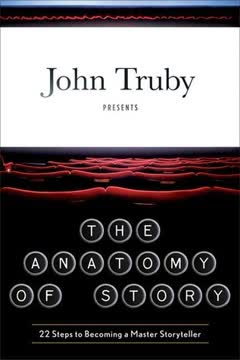
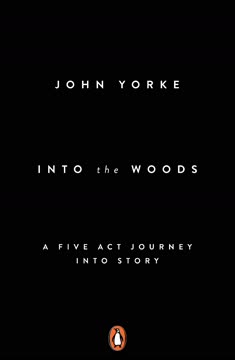
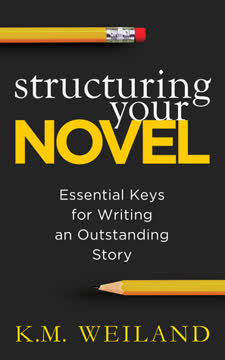
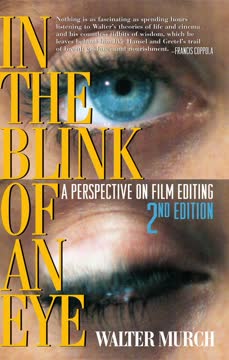
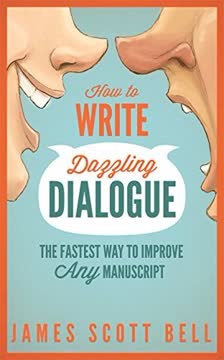
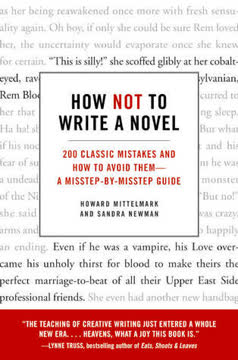
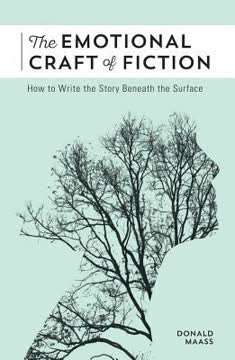
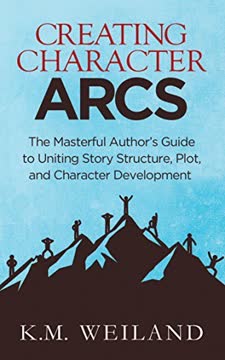

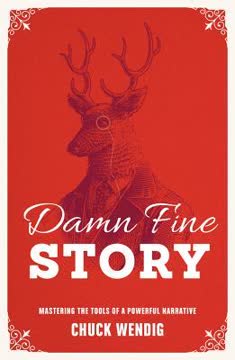
Download PDF
Download EPUB
.epub digital book format is ideal for reading ebooks on phones, tablets, and e-readers.
